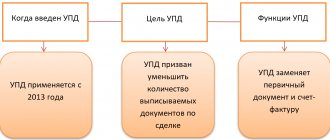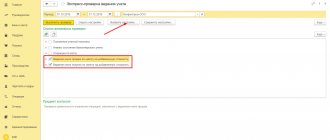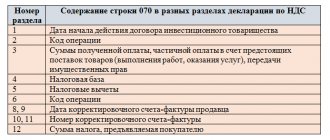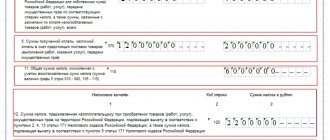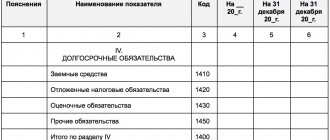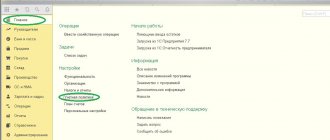Score 76. AB
If it is necessary to calculate and withhold alimony amounts collected from employees, account 76 is also used. The final balance for these entries can be of a debit or credit nature, depending on the specified conditions. Debit records any debt owed to the company.
The loan collects information on the debts of the enterprise itself to third parties. Therefore the account belongs to . 76 account in the balance sheet can be taken into account both in the active part and in the passive part. To do this, its expanded balance is analyzed. Debit balances constitute the asset item “Debit Accounts”.
The credit balance increases the liability of the balance sheet under the item “Accounts payable”. Analytical accounting is maintained separately for transactions.
Postings to account 76 form the final balance for each fact of mutual settlements with debtors and creditors.
On account 76, subaccounts have many meanings, the most used among them are: 76.
account 76.AB is not closed
I At the end of the year there were advances from buyers on account 62.2 and, accordingly, VAT on these advances on account 76.AB. Advances from customers were transferred using the document Entering initial balances of advances received from customers. Account 76.AB was transferred by operation. In January 2021, there were sales of these advances and they are included in the document immediately, but VAT is not included, i.e. account 76.AB is not closed. What was done wrong?
2 + 2 = 3.9999999999999999999999999999999…
ATTENTION!
If you have lost the message input window, press
Ctrl-F5
or
Ctrl-R
or the Refresh button in your browser.
The topic has not been updated for a long time and has been marked as archived. Adding messages is not possible.
But you can create a new thread and they will definitely answer you!
Every hour there are more than 2000
people on the Magic Forum.
Rebus Company
But we looked at only one side of the coin - when our company acts as a seller of its own products.
But in order to produce these products, the enterprise buys everything necessary for production (materials, equipment, etc.) and in this case itself acts as an ordinary buyer and pays VAT upon purchase, which the sellers added to the price of their goods. And this is where the “most interesting” part comes in.
Since VAT must flow into the pocket of the state from the buyer through the pocket of the seller, then when our enterprise acts as a buyer, the state returns to it the amount of VAT that it transferred to the seller.
In order not to get confused in complex calculations, the state introduced the following procedure: 1) first, each enterprise calculates the amount of VAT that it must pay to the state directly - that is, the amount from transactions in which our enterprise acted as a seller.
This part of the VAT is reflected in the liability side of the balance sheet.
Advances issued and received: procedure for registering accounting entries
How should these lines be filled out? Is there a strictly defined algorithm for passing an audit?
On this issue, we adhere to the following position: In the case under consideration, the organization did not make mistakes when reflecting in the balance sheet debts for advances issued and received. Therefore, no corrections to the balance sheet are required.
Justification for the position: In accordance with Part 1 of Art. 14 of the Federal Law of December 6, 2011 N 402-FZ “On Accounting” (hereinafter referred to as Law N 402-FZ), annual accounting (financial) statements generally consist of a balance sheet, a statement of financial results and appendices thereto. The mentioned annexes include: - statement of changes in capital; — cash flow statement; — report on the intended use of funds (clause
2 orders of the Ministry of Finance of Russia dated July 2, 2010 N 66n “On the forms of financial statements of organizations”, hereinafter referred to as Order N 66n); - others
What is the procedure for using subaccounts 76-AB and 76-VA to account for VAT amounts on advances received and issued?
3 Accounting Regulations “Income of the Organization” PBU 9/99, approved by Order of the Ministry of Finance of Russia dated May 6, 1999 N 32n, clause.
3 Accounting Regulations “Expenses of the Organization” PBU 10/99, approved by Order of the Ministry of Finance of Russia dated May 6, 1999 N 33n). Received (issued) advances (prepayments) are reflected in accounts payable (receivable). In the balance sheet they are reflected minus the amount of VAT payable (paid) to the budget (from the seller) and minus the VAT accepted for deduction (VAT subject to deduction) from the buyer (Appendix to the Letter of the Ministry of Finance of Russia dated 01/09/2013 N 07-02- 18/01, Letter of the Ministry of Finance of Russia dated 04/12/2013 N 07-01-06/12203, Interpretation T-16/2013-KPT “VAT on advances issued and received” (organization-developer: OJSC MCC EuroChem, Fund NRBU "BMC", meeting date: 08/09/2013) (hereinafter - Interpretation T-16/2013-KpT)). VAT amounts as part of receipts from buyers
We recommend reading: M Zhukova d 35 bailiffs Moscow
Topic: VAT on advances received is reflected in the balance sheet
Quick transition Accounting and Taxation Up
- Navigation
- Cabinet
- Private messages
- Subscriptions
- Who's on the site
- Search the forum
- Forum home page
- Forum
- Accounting
- General Accounting Accounting and Taxation
- Payroll and personnel records
- Documentation and reporting
- Accounting for securities and foreign exchange transactions
- Foreign economic activity
- Foreign economic activity. Customs Union
- Alcohol: licensing and declaration
- Online cash register, BSO, acquiring and cash transactions
- Industries and special regimes
- Individual entrepreneurs. Special modes (UTII, simplified tax system, PSN, unified agricultural tax)
- Accounting in non-profit organizations and housing sector
- Accounting in construction
- Accounting in tourism
- Budgetary, autonomous and government institutions
- Budget accounting
- Programs for budget accounting
- Banks
- IFRS, GAAP, management accounting
- Legal department
- Legal assistance
- Registration
- Inspection experience
- Enterprise management
- Administration and management at the enterprise
- Outsourcing
- Enterprise automation
- Programs for accounting and tax accounting Info-Accountant
- Other programs
- 1C
- Electronic document management and electronic reporting
- Other tools for automating the work of accountants
- Clerks Guild
- Relationships at work
- Accounting business
- Education
- Labor exchange Looking for a job
- I offer a job
- Club Clerk.Ru
- Friday
- Private investment
- Policy
- Sport. Tourism
- Meetings and congratulations
- Author forums Interviews
- Simple as a moo
- Author's forum Goblin_Gaga Accountant can...
- Gaga's opusnik
- Internet conferences
- To whom do I owe - goodbye to everyone: all about bankruptcy of individuals
- Archive of Internet conferences Internet conferences Exchange of electronic documents and surprises from the Federal Tax Service
- Violation of citizens' rights during employment and dismissal
- New procedure for submitting VAT reports in electronic format
- Preparation of annual financial/accounting statements for 2014
- Everything you wanted to ask the electronic document exchange operator
- How to turn a financial crisis into a window of opportunity?
- VAT: changes in regulatory regulation and their implementation in the 1C: Accounting 8 program
- Ensuring the reliability of the results of inventory activities
- Protection of personal information. Application of ZPK "1C:Enterprise 8.2z"
- Formation of a company's accounting policy: opportunities for convergence with IFRS
- Electronic document management in the service of an accountant
- Time tracking for various remuneration systems in the program “1C: Salary and Personnel Management 8”
- Semi-annual income tax report: we will reveal all the secrets
- Interpersonal relationships in the workplace
- Cloud accounting 1C. Is it worth going to the cloud?
- Bank deposits: how not to lose and win
- Sick leave and other benefits at the expense of the Social Insurance Fund. Procedure for calculation and accrual
- Clerk.Ru: ask any question to the site management
- Rules for calculating VAT when carrying out export-import transactions
- How to submit reports to the Pension Fund for the 3rd quarter of 2012
- Reporting to the Social Insurance Fund for 9 months of 2012
- Preparation of reports to the Pension Fund for the 2nd quarter. Difficult questions
- Launch of electronic invoices in Russia
- How to reduce costs for IT equipment, software and IT personnel using cloud power
- Reporting to the Pension Fund for the 1st quarter of 2012. Main changes
- Income tax: nuances of filling out the declaration for 2011
- Annual reporting to the Pension Fund. Current issues
- New in financial statements for 2011
- Reporting to the Social Insurance Fund in questions and answers
- Semi-annual reporting to the Pension Fund in questions and answers
- Calculation of temporary disability benefits in 2011
- Electronic invoices and electronic primary documents
- Preparation of financial statements for 2010
- Calculation of sick leave in 2011. Maternity and transition benefits
- New in the legislation on taxes and insurance premiums in 2011
- Changes in financial statements in 2011
- DDoS attacks in Russia as a method of unfair competition.
- Banking products for individuals: lending, deposits, special offers
- A document in electronic form is an effective solution to current problems
- How to find a job using Clerk.Ru
- Providing information per person. accounting for the first half of 2010
- Tax liability: who is responsible for what?
- Inspections, collection, refund/offset of taxes and other issues of Part 1 of the Tax Code of the Russian Federation
- Calculation of sick sheets and insurance premiums in the light of quarterly reporting
- Replacement of unified social tax with insurance premiums and other innovations of 2010
- Liquidation of commercial and non-profit organizations
- Accounting and tax accounting of inventory items
- Mandatory re-registration of companies in accordance with Law No. 312-FZ
- PR and marketing in the field of professional services in-house
- Clerk.Ru: design change
- Building a personal financial plan: dreams and reality
- Preparation of accounting reporting. Changes in Russia accounting standards in 2009
- Kickbacks in sales: pros and cons
- Losing a job during a crisis. What to do?
- Everything you wanted to know about Clerk.Ru, but were embarrassed to ask
- Credit in a crisis: conditions and opportunities
- Preserving capital during a crisis: strategies for private investors
- VAT: deductions on advances. Questions with and without answers
- Press conference of Santa Claus
- Changes to the Tax Code coming into force in 2009
- Income tax taking into account the latest changes and clarifications from the Ministry of Finance
- Russian crisis: threats and opportunities
- Network business: quality goods or a scam?
- CASCO: insurance without secrets
- Payments to individuals
- Raiding. How to protect your own business?
- Current issues of VAT calculation and reimbursement
- Special modes: UTII and simplified tax system. Features and difficult questions
- Income tax. Calculation, features of calculus, controversial issues
- Accounting policies for accounting purposes
- Tax audits. Practice of application of new rules
- VAT: calculation procedure
- Outsourcing Q&A
- How can an accountant comply with the requirements of the Law “On Personal Data”
- The ideal archive of accounting documents
- Service forums
- Archive FAQ (Frequently Asked Questions) FAQ: Frequently Asked Questions on Accounting and Taxes
- Games and trainings
- Self-confidence training
- Foreign trade activities in harsh reality
- Book of complaints and suggestions
- Diaries
ToTo Design School
If it is necessary to calculate and withhold alimony amounts collected from employees, account 76 is also used. The final balance for these entries can be of a debit or credit nature, depending on the specified conditions. Debit records any debt owed to the company.
The loan collects information on the debts of the enterprise itself to third parties. Therefore, the account belongs to active-passive.76 the account in the balance sheet can be taken into account in both the active and passive parts.
To do this, its expanded balance is analyzed. Debit balances constitute the asset item “Debit Accounts”. The credit balance increases the balance sheet liability under the item “Accounts payable.” Analytical accounting is maintained separately for transactions.
Postings to account 76 form the final balance for each fact of mutual settlements with debtors and creditors. On account 76, subaccounts have many meanings, the most used among them are: 76.
account 76.AB in the liabilities side of the balance sheet
Open the form for creating invoices for advances received
| Account number in RAS | Analytical subconto | Debit balance at the end of the year | Loan balance at the end of the year |
| Settlements with various debtors and creditors | 1 009 703,00 | 1 443 800,00 | |
| Insurance calculations | 1 253,00 | 4 000,00 | |
| Claims settlements | 8 000,00 | 790 000,00 | |
| Deposited salary | 5 800,00 | ||
| Settlements with other suppliers | 1 000 000,00 | 44 000,00 | |
| Settlements with other buyers, customers | 450,00 | 600 000,00 | |
| TOTAL collapsed | 434 097,00 |
To reflect in line 1550, you need to take only the balance on the credit of accounts of insignificant values. This means that the balance sheet will reflect:
4,000 + 5,800 + 44,000 = 53,800 rubles.
Note from the author! We must remember that the amounts included in the balance are in the format of thousands, that is, 54 thousand rubles. This circumstance is regulated by Order of the Ministry of Finance No. 66n according to OKEI codes.
How to reflect VAT on advances in the balance sheet
According to the rules of the Tax Code, an organization on OSNO that is not exempt from VAT, when receiving an advance on account of upcoming deliveries of products, works, services upon receipt of them, must calculate VAT (clause 2, clause 1, Article 167 of the Tax Code). Let's do this: VAT payable = 141,600 / 118 * 18 = 21,600 rubles.
At the moment when the clothes are sewn and shipped, Moda LLC needs to charge VAT again - already on the cost of the shipped products: VAT payable = 141,600 / 118 * 18 = 21,600 rubles. And VAT accrued earlier on the advance payment is accepted for deduction (clause 1, clause 1 and clause 14 of Article 167, clause 8 of Article 171 and clause 6 of Article 172 of the Tax Code).
A deduction is made if, after receiving an advance payment, the terms of the contract are changed or terminated and the corresponding amounts of advance payments are returned (clause 5 of Article 171 of the Tax Code). But in our example, we have only received an advance. How to reflect its receipt and the accrual of VAT on advances received in accounting?
To do this, they usually use one of the subaccounts to account 76:
It is unlikely that any organization can manage its activities without an advance payment system. Remember the famous phrase: “money in the morning, chairs in the evening”? Accounting has long adapted to this situation, and accountants operate with separate subaccounts for advance VAT quite confidently.
But there is one issue that has not yet been resolved, and today they continue to break spears about it - how to reflect VAT on advances in the balance sheet? Before we talk about which line of the balance sheet should reflect the amount of VAT on advances, let's remember how this VAT appears and on what accounts it exists.
How does “advance” VAT arise?
Let's start with an example. LLC "Style" is engaged in tailoring women's clothing and is located on OSNO. The organization has just opened. Wherein:
— an advance payment was made to the supplier Tweed LLC for fabrics in the amount of 59,000 rubles, including VAT 18%;
— an advance payment was received from the clothing store Moda LLC in the amount of 141,600 rubles, including VAT 18%.
First, let's deal with the prepayment received from the store. According to the rules of the Tax Code, an organization on OSNO that is not exempt from VAT, when receiving an advance on account of upcoming deliveries of products, works, services upon receipt of them, must calculate VAT (clause 2, clause 1, Article 167 of the Tax Code). Let's do this:
VAT payable = 141,600 / 118 * 18 = 21,600 rubles.
At the moment when the clothes are sewn and shipped to Fashion LLC, VAT must be charged again - already on the cost of the shipped products:
VAT payable = 141,600 / 118 * 18 = 21,600 rubles.
And VAT accrued earlier on the advance payment is accepted for deduction (clause 1, clause 1 and clause 14 of Article 167, clause 8 of Article 171 and clause 6 of Article 172 of the Tax Code).
A deduction is made if, after receiving an advance payment, the terms of the contract are changed or terminated and the corresponding amounts of advance payments are returned (clause 5 of Article 171 of the Tax Code).
But in our example, we have only received an advance. How to reflect its receipt and VAT calculation in accounting? To do this, they usually use one of the subaccounts to account 76:
Debit 51 “Current account” - Credit 62-2 “Settlements with customers for advances received” - in the amount of 141,600 rubles.
Debit 76-AV “Calculations for VAT on advances received” - Credit 68 “Calculations with the budget for VAT” - in the amount of 21,600 rubles. – VAT payable to the budget has been accrued
We must transfer the accrued VAT to the budget. We also issue an invoice to our buyer within 5 days after receiving the advance payment.
If the agreement between LLC “Style” and LLC “Moda” specifies an advance payment, then our buyer can claim VAT for deduction by receiving an invoice from us.
In the situation with Tweed LLC, the buyer is already Style LLC. And here the situation will be mirrored. We assume that the supplier is also on OSNO; upon receiving an advance payment from our organization, he charged VAT and issued us an invoice. The prepayment condition is specified in our contract.
We have the right (not obligated, but have the right, i.e. at will) to accept VAT on advance payment to the supplier for deduction (clause 12 of article 171 and clause 9 of article 172 of the Tax Code of the Russian Federation). In accounting, a special account is also used for these purposes. Because account 19 can only be used for purchased values.
Debit 60-2 “Settlements with suppliers for advances issued” – Credit 51 “Current account” - in the amount of 59,000 rubles. – prepayment is transferred to the supplier
Debit 68 “Calculations with the budget for VAT” - Credit 76-VA - in the amount of 9,000 rubles. – VAT on the advance payment to the supplier is accepted for deduction.
In the future, when we receive fabrics from the supplier, we will deduct another VAT - on the purchased values. And VAT accrued on the advance payment will be deducted (clause 3, clause 3, article 170 of the Tax Code of the Russian Federation). It is for this reason that not everyone uses VAT deduction from the advance payment, so as not to clutter up the accounting.
Reflection of VAT on advances in the balance sheet
Continuing our example, let's assume that at the end of the year the fabric has not yet arrived from the supplier, and therefore there is no shipment of finished goods either. What account balances do we have:
| Debit balances | Credit balances | ||
| 76-AV | 21 600 | 62-2 | 141 600 |
| 60-2 | 59 000 | 76-VA | 9 000 |
At the end of the year, we need to show accounts receivable and payable in the balance sheet (we do not look at settlements with the budget). But how?
This can be done in 2 ways:
- VAT is allocated as separate lines and is not balanced:
Assets:
Accounts receivable (line 1230) – 59,000 rubles. (supplier's debt for the listed advance payment)
Other current assets (line 1260) – 21,600 rubles. (VAT accrued on the advance received from the buyer, which we will then deduct)
Passive:
Accounts payable to suppliers (line 1520) – RUB 141,600. (advance received from supplier)
Other short-term liabilities (line 1550) – 9,000 rubles. (VAT on the advance payment, which we will then refund)
In the balance sheet we see in this case the debt of the buyer to the supplier along with VAT.
- VAT is balanced:
Accounts receivable (line 1230) – 50,000 rubles. (supplier debt for the listed advance) – balance 60-2 minus balance 76-VA
Accounts payable to suppliers (line 1520) – RUB 120,000. (advance received from the supplier) – balance 62-2 minus balance 76-AB
In the balance sheet in this case we see the buyer’s debt to the supplier without VAT. There is a “winding down” of advances and VAT related to them, and due to this there will be a decrease in the balance sheet currency.
So which option is right?
Position of the Ministry of Finance
According to the explanations of officials, option No. 2 is correct (letter of the Ministry of Finance dated 01/09/2013 No. 07-02-18/01. Namely, the balances of outstanding advances in the balance sheet must be reflected minus the corresponding amounts of VAT.
What is the basis for the officials' opinion?
PBU 1/2008 – assumption of going concern. Repayment of the obligation of the party who received the advance consists of the delivery of goods, performance of work, and provision of services. And based on the requirements of tax legislation, in terms of payment and reimbursement of VAT, the amount of obligations to be repaid does not include the amount of VAT.
There is a certain logic in the position of officials. The advance received in the future turns into revenue, which is reflected in the financial results statement without VAT. It would be logical if this “future” revenue would also be shown in the same estimate.
Similarly, the advance payment will later turn into materials, goods, services, and work, which will be reflected in the balance sheet without taking into account refundable VAT.
Another opinion
Supporters of option No. 1 have their own justifications:
- PBU 4/99:
— in the financial statements, offsets between items of assets and liabilities, items of profits and losses are not allowed, except in cases where such offset is provided for by the relevant PBUs (clause 34);
— the rules for evaluating individual items of financial statements are established by the relevant accounting provisions (clause 36);
For our situation, no rules of offset and evaluation are established in any PBU. VAT on advances is not a regulating value.
— items in the financial statements prepared for the reporting year must be confirmed by the results of the inventory of assets and liabilities (clause 38). The reconciliation with counterparties, of course, includes the entire amount of debt including VAT.
- Clause 73 Provisions for accounting and financial reporting: each party must show the amounts that follow from the accounting records and are recognized by it as correct. In the accounting records for accounts 60-2 and 62-2, we have the full amount of debt, including VAT.
- From the point of view of the Civil Code, the debt of the organization that received the advance exists in full. And upon termination of the contract, the refund will also be in full, including VAT.
Therefore, in practice, the decision will have to be made by the accountant, based on his professional judgment. In any case, the selected option must be included as a disclaimer in the explanations provided with the reporting. Program 1C: Accounting implements option No. 2, i.e. balances the balances.
Account 76 av
Receipt of goods from suppliers with invoices has been established. 2. Shipments to customers with invoices have been initiated. 3. Advance invoices have been made for the buyers' prepayments. We begin to study Operations - Closing the period - VAT Accounting Assistant.
There is also a useful summary report in 1C, see. Reports - Analysis of VAT accounting If payment and shipment (receipt) are in the same period, then everything is taken into account very simply: all my documents “Receipts of goods” in the invoice received have a checkbox “Reflect the VAT deduction in the purchase book by the date of receipt.”
Those. here we immediately make entries for VAT refund (68.02 Thus, the document creating the purchase book and sales book are almost empty. And all sorts of advances and other evil spirits got there, which makes the life of an accountant bright and eventful. The problem is that if you spit and don’t understand with advances, then all this will come out anyway.
Therefore, we are looking for algorithms for checking advances.
Buyers
62.01 K balance = 0 62.02 D balance = 0 don’t forget to make an account. in advance to buyers! 76.AB K balance = 0, also remember the debit balance (62.2*0.18/1.18=76.AB)
So: 1. receipt of goods from suppliers with invoices has been established. 2. Shipments to customers with invoices have been initiated. 3. Advance invoices are issued for the buyers' prepayments
We begin to study Operations - Closing the period - VAT Accounting Assistant . There is also a useful summary report in 1C, see. Reports - Analysis of VAT accounting If payment and shipment (receipt) are in the same period, then everything is taken into account very simply: all my documents “Receipts of goods” in the invoice received have a checkbox “Reflect the VAT deduction in the purchase book by the date of receipt.” Those. here we immediately make entries for VAT refund ( 68.02
Thus, the document formation of the purchase book and sales book is almost empty. And all sorts of advances and other evil spirits ended up there, which makes the life of an accountant bright and eventful. The problem is that if you give up and don’t deal with the advances, then it will all come out anyway. Therefore, we are looking for algorithms for checking advances.
What logic first tells us is that all options (where there are 2 periods, payment in one, shipment in the other) are divided into:
- 1.
- 1.1 client prepayment
- 1.1a счф. for advance payment (76АВ
- 1.2 shipment of goods to the client + regular invoice (there are no postings here, but see its shipment 90.03
- 1.2a we cancel the SCHF. for an advance payment (occurs when creating a purchase book - oddly enough).
- 2.
- 2.1 shipment of goods to the client
- 2.2 payment by the client
- 3.
- 3.1 prepayment to the supplier
- 3.1a supplier to you SCHF. for advance payment ( 68.02 Purchases - invoice for advance payment
- 3.2 receipt of goods from the supplier + regular invoice (68.02
- 3.2a we cancel the SCHF. for advance payment (76VA
- 4.
- 4.1 receipt of goods from the supplier (19.03
- 4.2 payment to the supplier
Please note that for paragraphs. 2 and 4 no SCHF is created. for advance They only appear if payment is made first.
76AB
God, how can I check all this crap with contractors, since since 2015. Each invoice must contend with the counterparty's accounting department.
Let's look at what the document “formation of a purchase book” contains. Attention ! : the document can only be found like this: Operations - Regulatory VAT reports , it is not in the log of all operations.
- “Creating a purchase book” - there is a division here:
- acquired values 68.02
- advances received 68.02
- Let’s look at what the document “formation of a sales book” contains:
- recovery on advances 76VA
First conclusions: 1. If the transaction went through 2 stages (shipment and payment) in full, then logically this can be seen in account 62 (there are no balances there) and, as a result, all advances are on the account. 76 of this counterparty must close, i.e. There should also be no leftovers. 2. If the client has an advance payment (there is a balance on account 62.2), then accordingly there will be a balance on account 76 in the ratio (62.2*0.18/1.18=76.AB). This is where a report on 62 with additional would be stupid. column according to the formula (62.2*0.18/1.18=76.AB). 3. If we made an advance payment to the supplier, then by law he must make an invoice. for an advance payment and send it to us, but usually this does not happen for obvious reasons: the supplier has made an SSF for himself. for an advance payment (paid VAT), but he doesn’t care about you - your problems, you need it - come for the SCHF yourself. for advance And it can also be understood - invoice documents and regular invoices are handed over with the delivery of goods, usually in boxes. If, after all, there is such a financial system. for an advance payment from the supplier, then it must be handled in Purchases - Invoices received - Invoice for advance payment . 4.
76av in the balance sheet as it closes
, making postings: Dt 62 Kt 51 - refund of advance payment. Dt 68 Kt 76 - acceptance of VAT on advances received for deduction.
• Reflects VAT for deduction in the purchase ledger. • Fills out line 120 of section 3 of the VAT return. Option for selling previously paid goods and materials • The seller accepts VAT on the advance received for deduction (clause
8 tbsp. 171 of the Tax Code of the Russian Federation), making entries: Dt 62 Kt 90 - proceeds from sales received. Dt 90 Kt 68 - VAT is charged on sales. Dt 68 Kt 76 - VAT on advances received is deducted. • Shows the VAT deduction for advances received in the purchase book with the invoice number that was issued by the seller upon receipt of the advance.
• Fills out a declaration in which he enters a deduction in line 170 of section 3. Tax authorities believe that VAT is charged on the advance payment received in any case, even if the periods of receiving the advance payment and the sale coincide (letter of the Federal Tax Service of Russia No. ED-4-3/11684).
We recommend reading: Order on the monthly sales plan
In addition, according to sub. 3 p.
Examples of entries for accounting for VAT on advances
Example of an operation for advances received
Harmony LLC, under an agreement with the buyer Amalgama LLC, must supply a consignment of goods in the amount of 212,400 rubles, incl. VAT — 32,400 rub. 07/10/2016 "Amalgam" transfers an advance payment of 50% of the contract amount: 106,200 rubles. VAT on advance: 106,200 * 18/118 = 16,200 rub.
We reflect in the postings VAT on advances received from the buyer:
In August, Harmony ships a consignment of goods to Amalgam. Sales transactions and deduction of VAT from advances received:
How to reflect VAT in financial statements?
The “input” tax is determined in account 19 “Value added tax on acquired assets” and can subsequently be accepted (again, by the VAT payer) for deduction (in accounting this is reflected by posting Debit 68-VAT Credit 19). But to acquire the right to a tax deduction, you must comply with certain articles.
171 and 172 of the Tax Code of the Russian Federation conditions:
- the purpose of the purchase for activities subject to VAT;
- capitalization of the acquisition;
- availability of an invoice issued by the counterparty in accordance with Art. 169 of the Tax Code of the Russian Federation.
If acquired material assets (work performed, services provided) will be used in activities not subject to VAT, the “input” VAT on them is written off to cost accounts or included in the cost of the property.
Thus, it is quite likely that there is no balance on account 19 on the last day of the reporting period. Then line 1220
“Value added tax on acquired assets”
is not filled in (a dash is placed in it).
Application of account 76
Account 76 is used to account for business transactions by the following entities:
- enterprises that have subsidiaries and dependent companies;
- non-profit organizations - for example, HOAs;
- partnerships;
- participants in commission agreements;
- participants in leasing agreements;
- payers of various duties and fees;
- developers under shared construction programs.
Account 76 is also used to reflect transactions related to the payment of VAT (both by ordinary payers and tax agents).
All of the above categories of business entities can use both the main subaccounts for account 76 provided for by the Plan, and additional ones selected taking into account the specifics of economic activity.
How is VAT reflected in the balance sheet?
Based on the same reasoning (calculations occur during the year), line 1520 is located in the “Short-term liabilities” section of the balance sheet liability. There are certain features of reflecting tax for each of these lines. To exercise the right to deduction, a number of conditions must be simultaneously met:
- the cost of acquired assets is reflected in accounting;
- the acquired assets are intended for the type of activity that is subject to VAT;
- there is a correctly issued invoice from the supplier.
For many organizations, account 19 is reset to zero at the end of the year, and in this case a dash is added to line 1220 of the balance sheet.
Line 1220 “VAT on acquired assets” Line 1220 reflects the amount of tax that the company will be able to claim for deduction in the future. The remaining value (debit balance) for account 19 is transferred to this balance line.
Account balance
Why, when preparing financial statements for 2012, the balance of account 76AB and 76BA began to be taken into account in lines 1230 and 1520 of the balance sheet?
In Section II “Separate Issues of Preparation of Financial Statements” in accordance with the subsection “Evaluation of debt for advances paid (received)”: “... in the case of an organization transferring payment, partial payment for upcoming deliveries of goods (performance of work, provision of services , transfer of property rights), accounts receivable are reflected in the balance sheet as assessed minus the amount of value added tax subject to deduction (accepted for deduction) in accordance with tax legislation.” Users of ITS versions of PROF can receive free consultations from auditors on accounting and taxation issues, as well as consultations from labor law specialists on personnel issues.
You can send your questions to .
The letter must indicate the registration number of the program for which the 1C:ITS contract is issued and describe in detail the situation requiring consultation.
What did the Ministry of Finance say?
Financiers traditionally express their point of view on some of the nuances of preparing financial statements in annual recommendations for conducting an audit of annual financial statements. The most recent of them - on the audit of financial statements for 2012 - were sent by Letter of the Ministry of Finance of Russia dated 01/09/2013 N 07-02-18/01 (hereinafter referred to as the Recommendations). But, perhaps, never before has the opinion of officials caused so much excitement and controversy - and on several positions at once. And one of them was precisely the instructions on the procedure for assessing debt for advances paid and received (advance payment).
The essence of the requirements of the financial department specialists is that the balances of outstanding advances and prepayments must be reflected in the balance sheet minus the corresponding amounts of VAT , that is:
- receivables in the case of transfer of full or partial prepayment (advance payment) for upcoming supplies of goods (performance of work, provision of services, transfer of property rights) must be reflected in the balance sheet asset minus the amount of VAT that is subject to deduction (or has already been accepted for deduction);
- accounts payable in the liability side of the balance sheet of an organization that has received a full or partial prepayment (advance) against the upcoming supply of goods by this organization (performance of work, provision of services, transfer of property rights) should also be reflected in the assessment minus the amount of VAT payable or already paid in budget in accordance with tax legislation.


